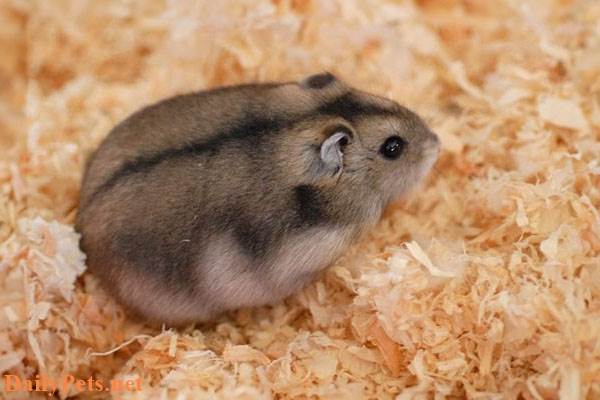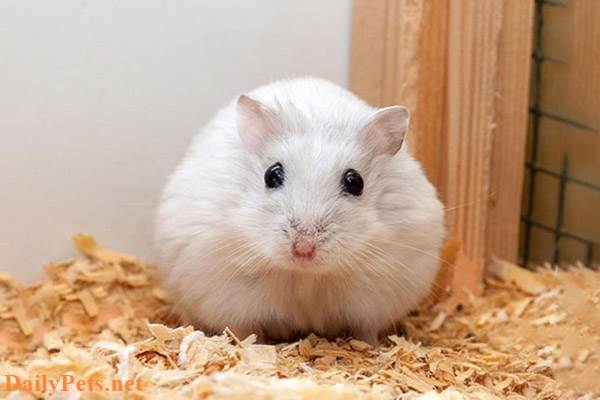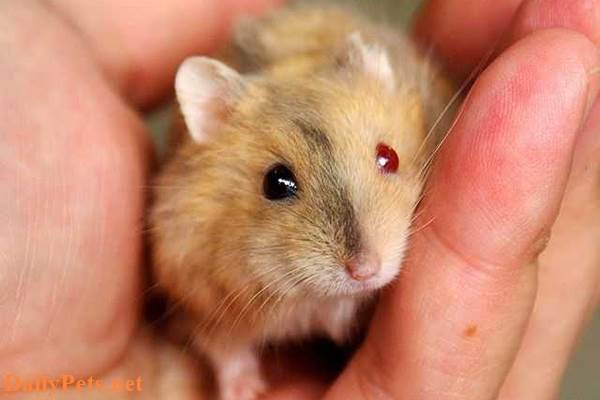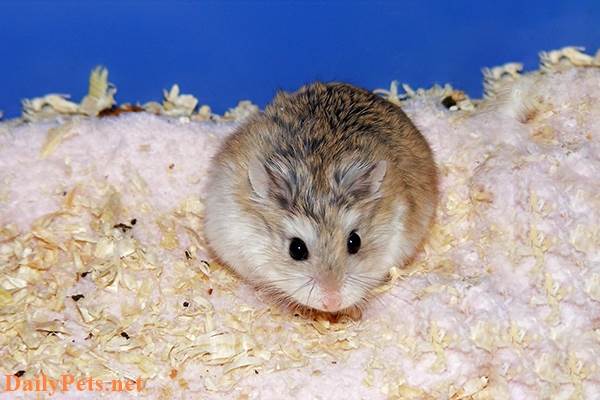Currently, Chinese hamsters are kept as pets. They are relatively small and easy to care for, docile temperament but are also very active and love to play with toys.
Chinese Hamster orgin
The Chinese Hamster is native to the desert regions of Mongolia and northern China. They live in underground burrows in the wild to escape the extreme heat and cold.
The Chinese hamster was first brought to Europe in the 1920s and became a popular pet in the 1930s. They were introduced to the United States in 1955.
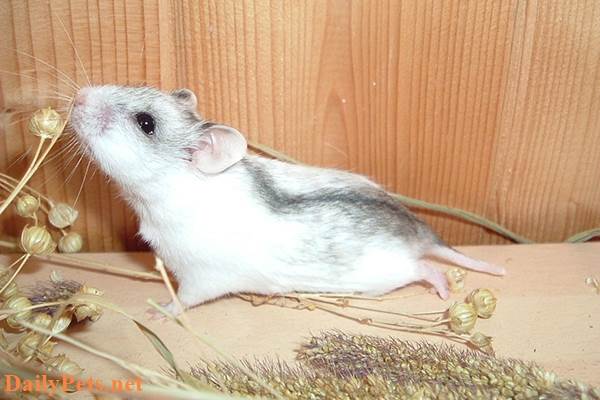
Chinese hamster.
When grown up, these mice have a length of 8-12 cm and weigh from 31-45 grams, especially different from other Hamster lines; the Chinese Hamster has a fatter and longer tail, about 3.3 cm. The fur is brown or gray; the underside is light. Life expectancy is 2 to 3 years in captivity.
Chinese Hamster Appearance Features
These Chinese Hamsters are classified as small mice. An adult Chinese Hamster usually achieves:
Length: about 8.2 – 13 cm
Weight: about 30 – 45 grams
The head of the Chinese Hamster is large and rather pointed forward. The nose and mouth of the mouse are pointed, so the head of the mouse is more pointed. Chinese Hamster’s eyes are round and black. Mouse eyes protrude outward without a protective eye contour. The forehead of the mouse is quite flat and has a stripe running in the middle of the forehead. The nose of the Chinese Hamster is straight but very small; the nostrils are small, and the tip of the nose is pink. The ears of Chinese Hamsters are quite large and have a broad leaf shape, and the tips of the ears are pointed and often point forward.
The body of a Chinese Hamster is quite slim and toned. The Chinese Hamster has no neck, but the back is attached to the head. Their back is very straight; the back is relatively wide. The lower body is developed with a flat and rounded posterior abdomen. Chinese Hamster feet are small, soft, full-toed, very long, and have sharp claws. The hard white claws help the mouse to dig very quickly and well.
The coat of the Chinese Hamster is quite soft and short. Except for the tip of the nose and paws, the whole body of the mouse is covered with hair. The coat color of Chinese Hamsters is usually dark gray with a bit of yellowish brown. Long black Chinese Hamster mustache, arranged in order. A strip of black hair runs from the nose’s bridge to the tail’s end.
Personality characteristics of Chinese Hamster
These Chinese Hamsters are nocturnal animals. The Chinese Hamster usually sleeps a lot during the day and wakes up when the sun is out. Chinese Hamsters can wake up and perform some light actions during the day. However, it is best not to wake them when they are asleep. The Chinese Hamster will become tough and grumpy. They can hurt you.
The Chinese Hamster is a not-so-sociable and friendly animal. These Chinese Hamsters will become extremely gentle if cared for from an early age. A few unexpected situations will make the Chinese Hamster panic. They are not highly capable of handling situations. These Chinese Hamsters are not loyal animals. They are usually not attached to humans.
Chinese Hamsters are territorial. They do not or rarely yield to each other to live in harmony. If you love them in pairs, these mice will compete for the higher position. They also don’t like being kept in tight spaces.
The Chinese hamster will bite a lot of furniture they come into contact with.
How does a Chinese Hamster breed?
Chinese Hamsters can start breeding as early as 5 weeks old. These mice have a lifespan of 2-3 years. If kept in captivity, mice can live up to 4 years old. This breed of mice begins to breed for the first time at 5 months. The gestation period of the Chinese Hamster is 18-22 days. Some individuals can be long. The mother mouse can give birth to 10-12 pups in each litter.
How to care for a Chinese hamster?
Chinese hamster cage
As with other dwarf hamsters, you need to equip a cage without too large openings that will create opportunities for them to escape, so it is best to use an aquarium or closed cage is still optimal and secure them cage. must be big enough.
When you take your Chinese hamster out to play, special attention is needed; as long as you are negligent, it will run around and disappear under your control.
Do not use pine or cedar to line the bed because it will reduce ventilation. You need to clean the cage to avoid illness for your hamster.
Avoid urine accumulation; this affects the environment, leads to pollution, and causes disease in hamsters.
If you choose the cage as an aquarium, you need to create as much ventilation as possible because this is a rather enclosed space and can be overwhelming.
It is necessary to place the cage where it is easy to see to prevent the baby from running away, leading to a fall, or if I do not pay attention, I will step on them.
Chinese hamster food
The food of the Chinese hamster can be nuts and grains and supplemented with fresh foods such as eggs, vegetables, and biscuits with the effect of grinding teeth. And you must make sure that these foods are not allergenic to your hamster.
The pet store also sells hamster food, mostly nuts. Because Chinese hamsters are quite picky in eating and their resistance is weak, you cannot feed them like other hamsters but need to create a reasonable diet.
Common diseases of Chinese hamsters
Chinese hamsters are quite weak in health, so they are susceptible to the following diseases:
- Wet tail: This is probably a common disease of rodents, especially for hamsters. Tail is also a highly contagious disease caused by the bacterium Campylobactor jejuni. The symptoms of this disease are usually the hamster’s loss of appetite, lethargy, and frequent diarrhea. If you experience the above symptoms, you should immediately seek medical attention; if left for a long time, it can lead to death.
- Respiratory infection: Symptoms of this disease are wheezing, runny nose, lethargy, and sneezing. When your hamster shows these signs, you need to take it to the doctor for treatment.
Experience when choosing to buy a Chinese hamster
You observe whether the seller keeps the barn clean, as a dirty environment leads to a high risk of disease.
If the hamster is awake, you need to see how quickly they are active, exploring the surrounding area.
As for the case of a sleeping hamster, then you observe the following points:
- The coat must be clean, not ruffled or bald.
- There should be no greasy spots on the face or wet tails, which could indicate that the hamster has no infection.
- Check if the mouse’s breathing is even or complicated.
If possible, ask the seller to use food to wake the mouse and see if they move normally.
